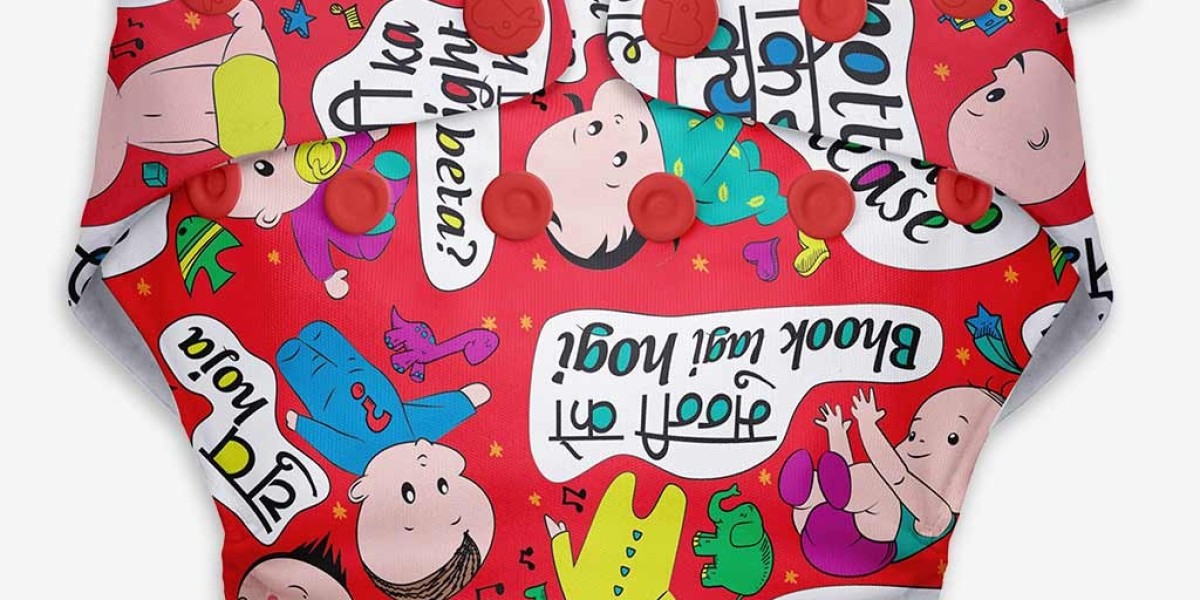Cloth diapers have become popular among eco-conscious parents, offering an environmentally-friendly and cost-effective alternative to disposable diapers. While many brands and styles of cloth diapers are available on the market, some parents prefer to take a hands-on approach and make their own. This blog post will explore the world of DIY cloth diapers, providing step-by-step instructions, tips, and creative ideas to craft your own reusable baby essentials.
Benefits of DIY Cloth Diapers
Making your cloth diapers comes with several advantages:
Cost Savings: DIY cloth diapers are often more budget-friendly than pre-made ones. By using readily available materials and repurposing fabrics, you can significantly reduce the cost of cloth diapering.
Customization: When making your reusable cloth diapers, you can customize them to suit your baby's specific needs. You can adjust the size, absorbency, and design to create a diaper that fits your little one perfectly.
Eco-Friendly: DIY cloth diapers promote sustainability by reducing the demand for commercially manufactured products. Upcycling old fabrics and materials contributes to a greener and more environmentally-conscious lifestyle.
Materials Needed for DIY Cloth Diapers
Before you begin your DIY cloth diapering project, gather the following materials:
Fabric: Choose a soft, absorbent, and breathable fabric for the inner layer, such as organic cotton, bamboo, or hemp. Select a waterproof material like PUL (polyurethane laminate) or TPU (thermoplastic polyurethane) for the outer layer to prevent leaks.
Elastic: Elastic bands will be needed to provide a snug fit around your baby's legs and waist. Opt for the high-quality elastic to ensure durability.
Fasteners: Decide on the type of fastener you want to use. Standard options include snaps, hook-and-loop closures (like Velcro), or diaper pins.
Sewing Machine and Accessories: A sewing machine creates sturdy seams. Remember to have matching thread, scissors, pins, and other sewing accessories on hand.
Step-by-Step Guide to Making DIY Cloth Diapers
Step 1: Pattern Selection
Before cutting any fabric, choose a washable diapers for baby pattern that aligns with your preferences and sewing skills. Numerous free and paid designs are available online for various styles, including pocket diapers, all-in-ones, and fitted diapers. Select a pattern that suits your baby's needs and your sewing capabilities.
Step 2: Cutting the Fabric
Once you have your pattern, carefully cut the fabric pieces according to the instructions. Remember to account for seam allowances and any additional features you want to include, such as gussets or extra layers for added absorbency.
Step 3: Assembling the Diaper
Follow the pattern instructions to sew the fabric pieces together. Pay close attention to the placement of elastic and fasteners, ensuring a snug and leak-proof fit.
Step 4: Adding Absorbency
If you're making pocket diapers or all-in-ones, you'll need to add an absorbent insert. Cut and sew layers of porous material, such as cotton, hemp, or bamboo, to fit inside the diaper pocket or sewn into the all-in-one diaper.
Step 5: Finishing Touches
Once you've assembled the diaper and added any additional features, check for loose threads or areas needing reinforcement. Trim any excess fabric, and make sure all closures and elastic are securely attached.
Tips for Successful DIY Cloth Diapers
Start with Simple Designs: If you're new to sewing cloth diapers, begin with straightforward designs that require minimal sewing and fewer complex features.
Repurpose Old Materials: Look for old towels, t-shirts, or flannel blankets for the absorbent layers in your DIY cloth diapers. Upcycling these materials reduces waste and saves money on buying new fabrics.
Practice with Scrap Fabric: Before cutting into your chosen fabric, practice sewing with scrap fabric to get familiar with the pattern and stitching techniques.
Seek Community Support: Join online DIY cloth diapering communities or forums to seek advice, share ideas, and learn from experienced crafters.
Conclusion
DIY cloth diapers offer a rewarding and sustainable way to care for your baby while expressing creativity. Making your own reusable baby essentials allows you to save money, customize the design, and contribute to a greener lifestyle. As you embark on this fulfilling journey of creating cloth diapers, consider incorporating materials from eco-conscious brands like Superbottoms to enhance your baby's comfort and environmental impact.
Superbottoms, known for its commitment to sustainability and quality, provides an excellent selection of materials and accessories that can complement your DIY cloth diapering project. From soft and absorbent fabrics to reliable diaper fasteners, Superbottoms offers eco-friendly options to create functional and planet-friendly cloth diapers.
Combining your DIY skills with materials from trusted brands like Superbottoms allows you to maximize the benefits of cloth diapering and enjoy a rewarding parenting experience. Not only will your baby benefit from the comfort and customization, but you'll also take pride in contributing to a greener future for the next generation.
Embrace the joy of crafting and the accomplishment of making something special for your baby's well-being and the planet's health. Happy sewing and cloth diapering! Together, let's positively impact the environment while nurturing our little ones with care and love.








